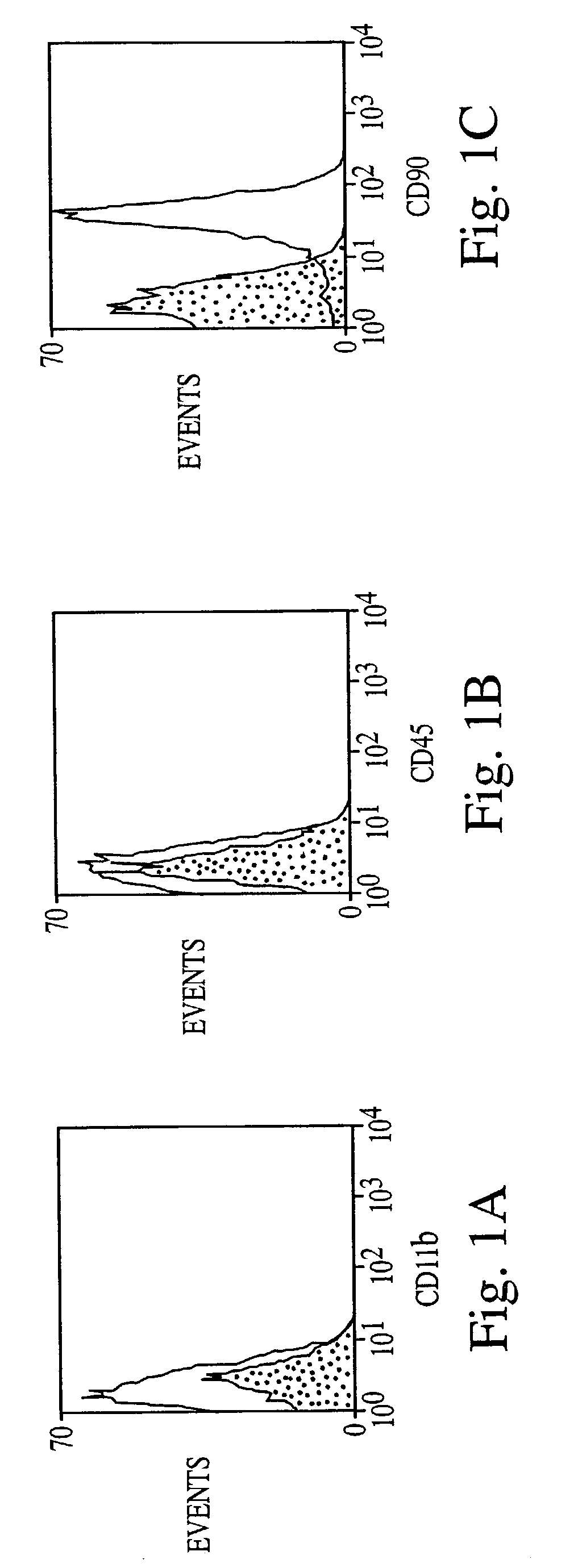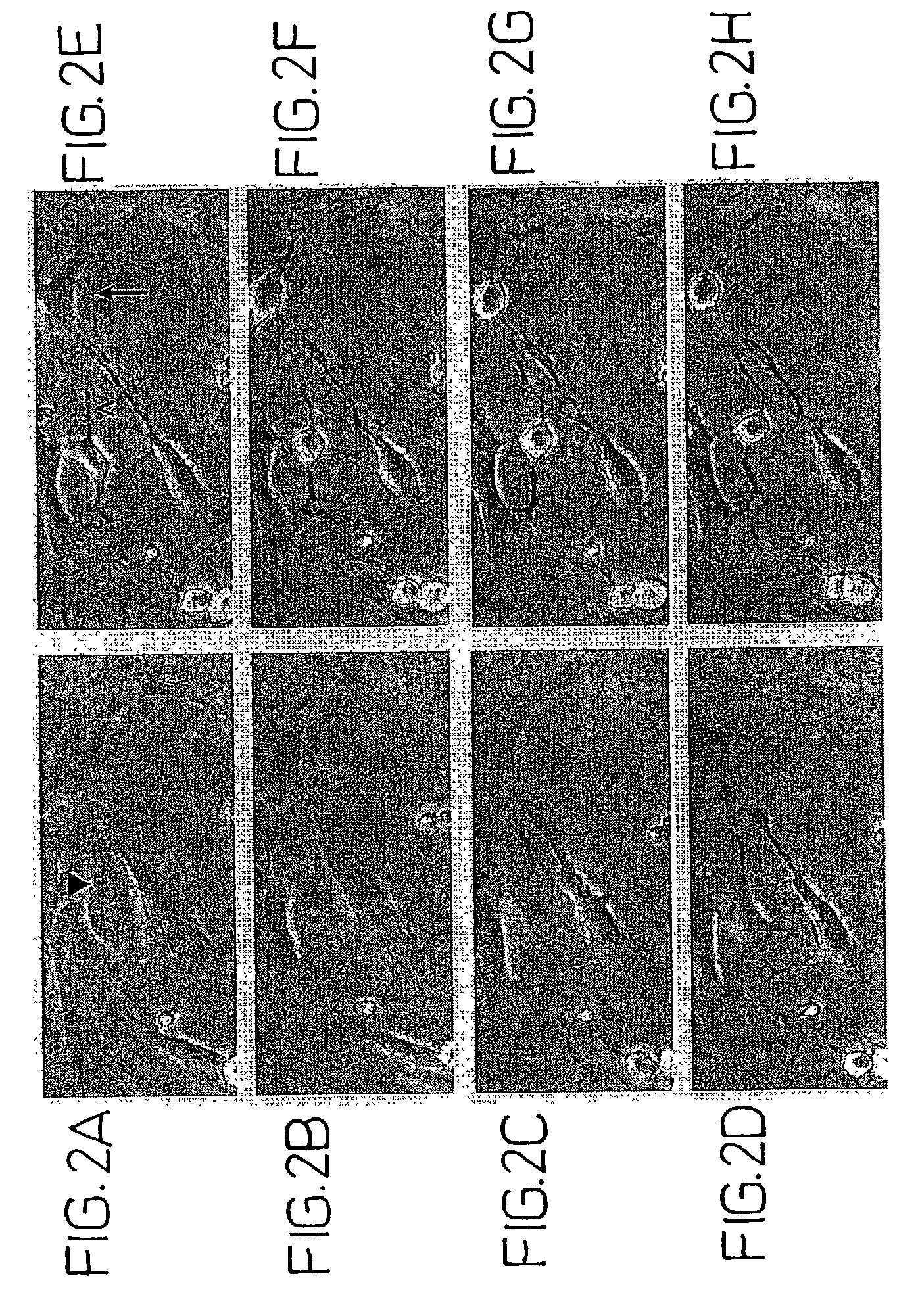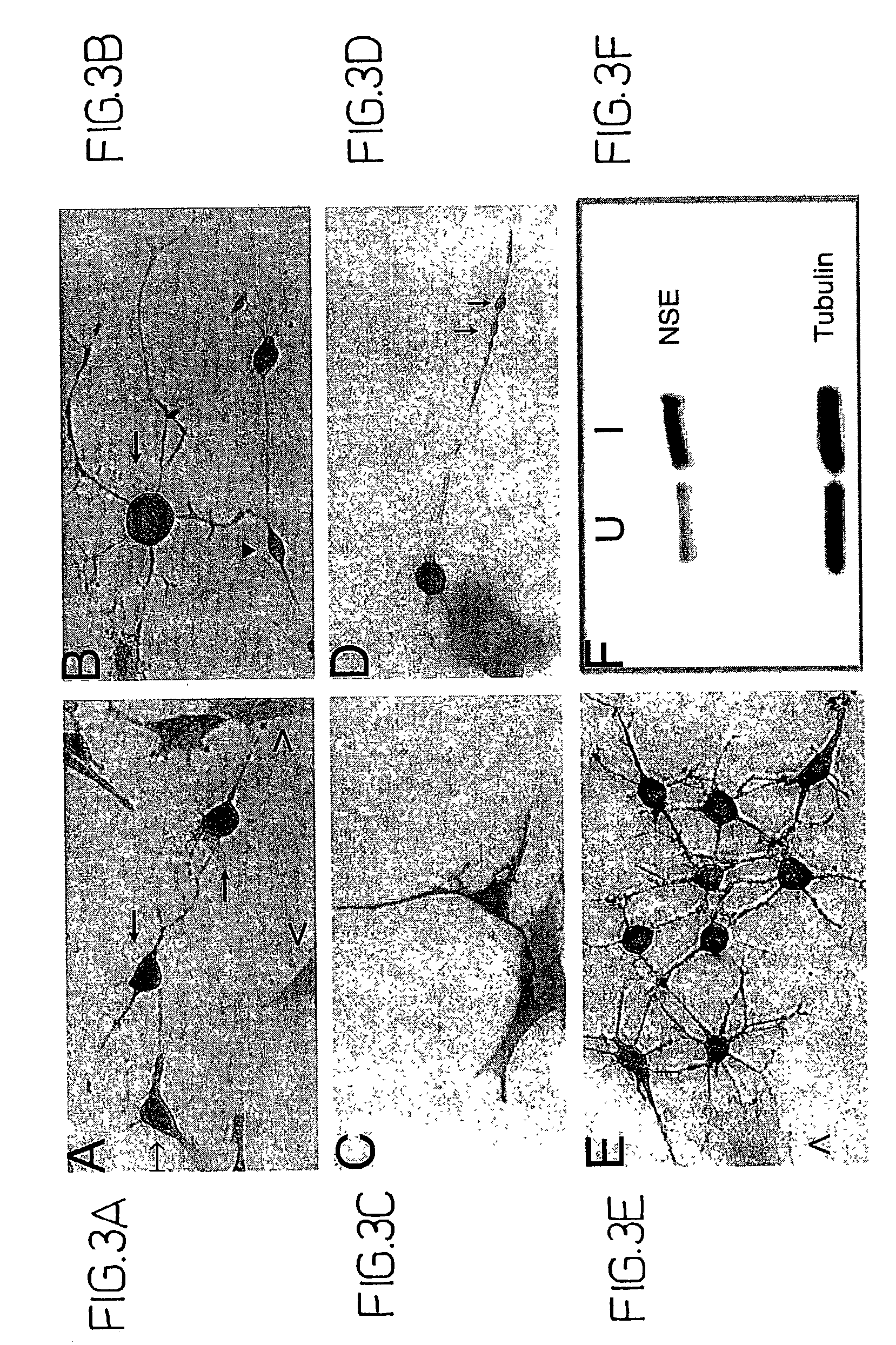Differentiation of bone marrow cells into neuronal cells and uses therefor
a technology of neuronal cells and bone marrow cells, which is applied in the field of differentiation of bone marrow cells into neuronal cells and uses therefor, can solve the problems of no method for inducing mscs to differentiate into neuronal cells, no method for obtaining large numbers of neuronal cells, and severe limitations of clinical utility
- Summary
- Abstract
- Description
- Claims
- Application Information
AI Technical Summary
Benefits of technology
Problems solved by technology
Method used
Image
Examples
examples
[0087]The experiments presented in this example may be summarized as follows.
[0088]Bone marrow stromal cells exhibit multiple traits of a stem cell population. They can be greatly expanded in vitro, and induced to differentiate into multiple mesenchymal cell types (see, e.g., WO 96 / 30031; WO 99 / 43286). However, differentiation to non-mesenchymal fates has not been demonstrated. Here, adult rat stromal cells were expanded as undifferentiated cells in culture for more than 14 passages, indicating their proliferative capacity. Further, a novel treatment protocol induced the stromal cells to exhibit a neuronal phenotype, expressing various neuron-specific markers, i.e., neuron-specific enolase (NSE), NeuN, neurofilament-M, tau, nestin, and trkA.
[0089]Moreover, the refractile cell bodies of the treated cells extended long processes terminating in growth cones and filopodia typical of neuronal cells. The fluorescent dye, FM1–43, labeled growth cones, consistent with transmitter release an...
PUM
 Login to View More
Login to View More Abstract
Description
Claims
Application Information
 Login to View More
Login to View More - R&D
- Intellectual Property
- Life Sciences
- Materials
- Tech Scout
- Unparalleled Data Quality
- Higher Quality Content
- 60% Fewer Hallucinations
Browse by: Latest US Patents, China's latest patents, Technical Efficacy Thesaurus, Application Domain, Technology Topic, Popular Technical Reports.
© 2025 PatSnap. All rights reserved.Legal|Privacy policy|Modern Slavery Act Transparency Statement|Sitemap|About US| Contact US: help@patsnap.com



